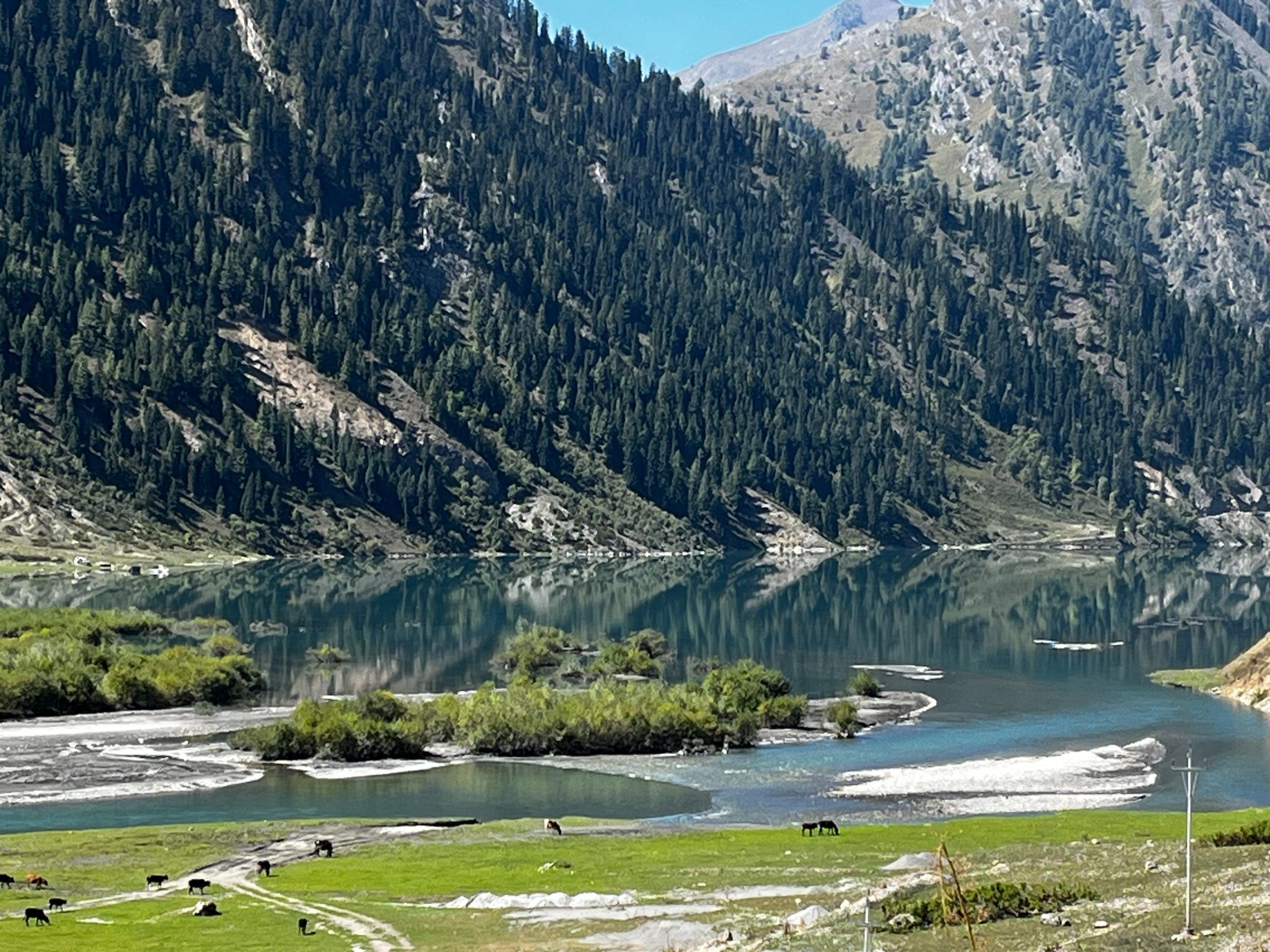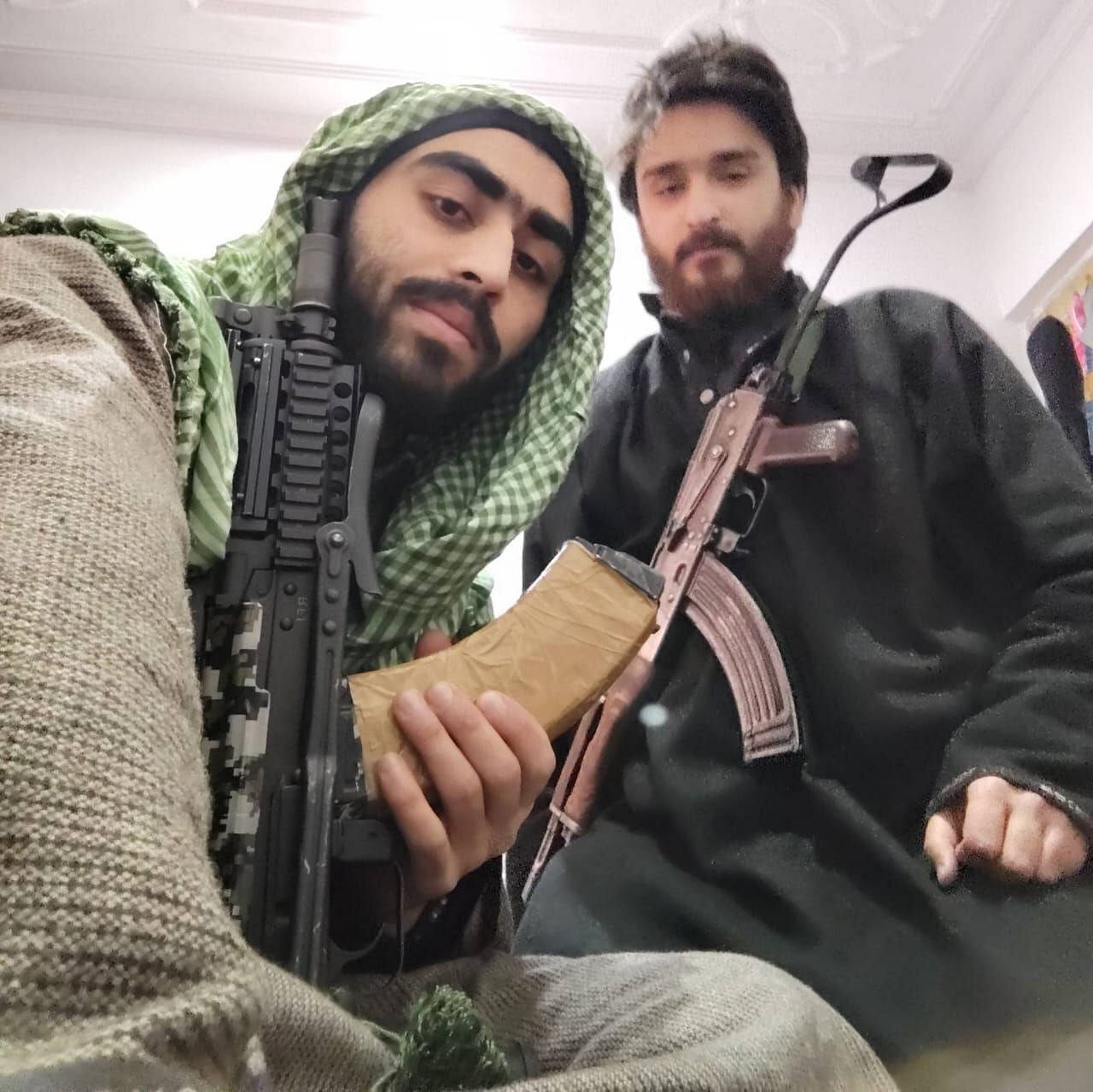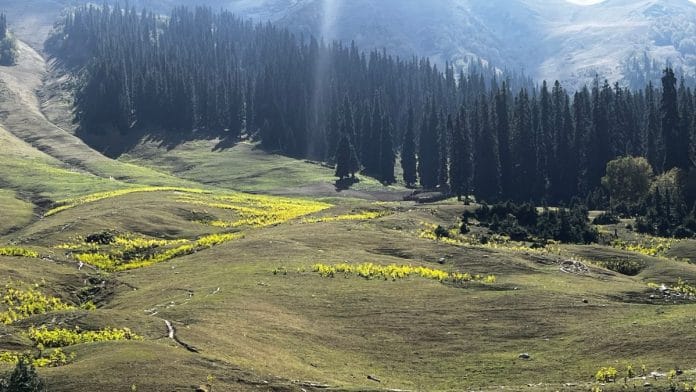Patalwan Sar, Gurez: Eleven-year-old Javed Ahmad Sheikh saw some men appear at the far end of his family’s summer pasture grounds. Their guns slung casually over their shoulders, they moved slowly through the endless carpet of grass lit emerald green by the setting sun. One reached into his bag to offer the child a chocolate and asked him to show them the shortest route through the Deesan plain and past the layers of barbed-wire fence running through Lilly, an Indian Army outpost perched at more than 3,500 metres above sea level.
The routes through the high mountains were as familiar for Javed as the back lanes of a neighbourhood would be for any urban child—and a few chocolates probably didn’t seem like a bad offer for a couple of hours of work.
Ten years later, in 2018, the family finally heard from their son again. “I’m married now and have two children,” Javed told his father, Ghulam Muhammad, who works with the electricity department in the village of Markoot. “I have a job with the Pakistan Army. I hope I see you again someday.”
Ever since February 2021—when India and Pakistan signed an agreement mandating “strict observance” of a ceasefire first put in place 18 years earlier—hundreds of trekkers have made their way through the same meadow where Javed disappeared.
The sounds of savage artillery skirmishes—once unleashed to help jihadists push past Indian border defences, which claimed dozens of civilian lives—have been replaced by firecrackers set off at weddings and political rallies.
Last month, however, an Indian Army patrol opened fire on a group of infiltrators suspected to have been attempting to cut through the Line of Control (LoC) fencing in Gurez.
Two terrorists were shot dead on LoC in Machil in the adjoining district of Kupwara, and another in Tangdhar. For months now, infiltration has been escalating south of the Pir Panjal mountains, through Kathua and Samba, and there is growing concern that it could unravel the peace in the northern ranges, too.
From the beginning of the Kashmir jihad, the mountains of Gurez served as highways to ship cadres of terrorist groups, like the Hizb-ul-Mujahideen and Lashkar-e-Taiba, across the LoC. The forests of Bandipora and Ganderbal, key zones of concentration for jihadists, were just a two-day walk.
The 26/11 attack operations commander Muzammil Bhat is believed to have crafted the infiltration of over 150 terrorists through Gurez in the winter of 2013, undetected until a clash which led to the killing of 18 Lashkar cadre and eight personnel of the elite 1 Para Commando Regiment.

Also Read: In Kashmir’s Gurez valley, BJP bets big on winning ‘Wazir vs Faqir’ battle as Gurezis seek ‘justice’
Revival of terror?
Levels of jihadist violence have been low since 2019, when a bombing at Leithpora claimed the lives of 40 central police personnel and led India and Pakistan to the edge of war. There is evidence, though, that recruitment into groups like the Lashkar-e-Taiba continues, using subterranean networks. Last week, police and Indian Army troops in Kulgam shot dead Aqib Shergojri and Umais Wani, both accused of running a Lashkar cell operating in southern Kashmir. Both were recruited in 2021 while still college students.
Twin sons were born in 1999 to Gulshana Akhtar and Nasir Gojri, who run a tea-shop at the lower courts in Srinagar’s Bemina neighbourhood. Aqib, one of the two, was given to his childless maternal uncle, Abdul Hamid Hazar, in the village of Wagam near Pulwama.
Following his school education, Aqib joined the Degree College in Pulwama, but dropped out in his second year to study for a religious qualification from the Daar-ul-Uloom Pinjoora seminary in Shopian. There, police sources have told ThePrint, he was introduced to the work of Ibn Taimiyya, a thirteenth-century cleric who developed an iconoclastic theology of war as the Mongol invasions levelled the Arab world.
Under pressure from his family to earn a living, Aqib dropped out of the seminary after a few months to work at an automobile worship in Pulwama. However, he maintained contact with Lashkar-e-Taiba jihadist Arif Hazar, to whom he had been introduced at the seminary.
Following the killing of Arif in an encounter with police in 2022, Aqib left home to join the group. Though equipped with assault rifles and a nine-millimetre handgun, Aqib and Umais received no real training in weapons and tactics, police sources believe. Lashkar’s Pakistani jihadists showed them how to clean their weapons and fire a few rounds, after which the two men were told to return to their villages and try to find more recruits.
The untrained jihadists were unable to carry out any significant acts of violence. Lashkar propaganda videos record that they seem to have spent time producing TikTok-like performances intended to inspire other potential recruits.
But figures like Aqib demonstrate that there is still a pool of individuals who can be drawn towards the jihadist movement, should the Inter-Services Intelligence choose to make training and equipment available. And that has made forces guarding the LoC in the north increasingly concerned.
Terrorists from southern Kashmir have been attempting to push past the LoC in Gurez. Two years ago, the bodies of Tral resident Nisar Ahmad Rather and Sameer Ahmad Dar of Dogripora near Pulwama were found drowned in a mountain stream running through Tulail, close to the LoC. The bodies were weighed down with four assault rifle magazines, 116 magazines, a grenade and a wireless communication set.
Kashmir-based intelligence officials say the two men had left for training camps in Pakistan late in 2019 and had been sent back across the LoC to join small units like that run by Aqib. “The assumption has to be there have been more groups like these that we didn’t succeed in detecting,” one official told ThePrint.

An unquiet peace
For centuries, Gurez’s ethnic-Dard communities earned a living by serving trade convoys headed from Srinagar to Gilgit, and on to the grade Silk Road markets of Yarkand and Kashgar. The hamlet of Chorwan, close to the LoC, earned a reputation for being home to skilled guides, who could help the caravans evade medieval rulers’ tax outposts.
Following the war of 1947-1948, the trade ended, but was replaced by low-grade trafficking of liquor, stolen livestock and even cigarettes—the traffickers often doubling as spies for the armies of India and Pakistan.
To some traffickers in Gurez, the large numbers of jihadists crossing the LoC from 1990 represented a simple business opportunity, local police officials say. One group of 31 infiltrators, arrested jihadist Sayeed Moinullah Shah had revealed in 2009, employed 39 porters and 40 men to beat the snow into a path.
Artillery fire was often used by the Pakistan Army to provide cover to these infiltration attempts—often with devastating consequences for civilians. In 2019, two Gurez region residents were killed, and dozens of homes were damaged during one especially heavy artillery exchange. There was further damage to property in 2020.
Few residents of the Gurez region joined jihadist groups themselves, though several found themselves sucked into the grey world of LoC trafficking. In 2018, Tulail resident Feroze Ahmad Lone was reported missing by his family. Two years later, he was reported by Islamabad to have been arrested as a spy, together with former Territorial Army soldier Noor Mohammad Wani.
Tarabal teenager Mohammad Sayed Ganie accidentally crossed the border in 2020, but was later returned home by the Pakistan Army. The year after, the Pakistan Army even returned 29 Yaks, which had strayed across the LoC from Tulail.
For Gurez residents, peace on the LoC has meant the blossoming of their tourism industry and the resumption of infrastructure work made impossible by shelling. The resumption of terrorism to the south, though, suggests that storms could again be gathering.
(Edited by Mannat Chugh)
Also Read: With Kashmir in election mode, security bureaucracy unprepared for looming mountain war with Jaish






